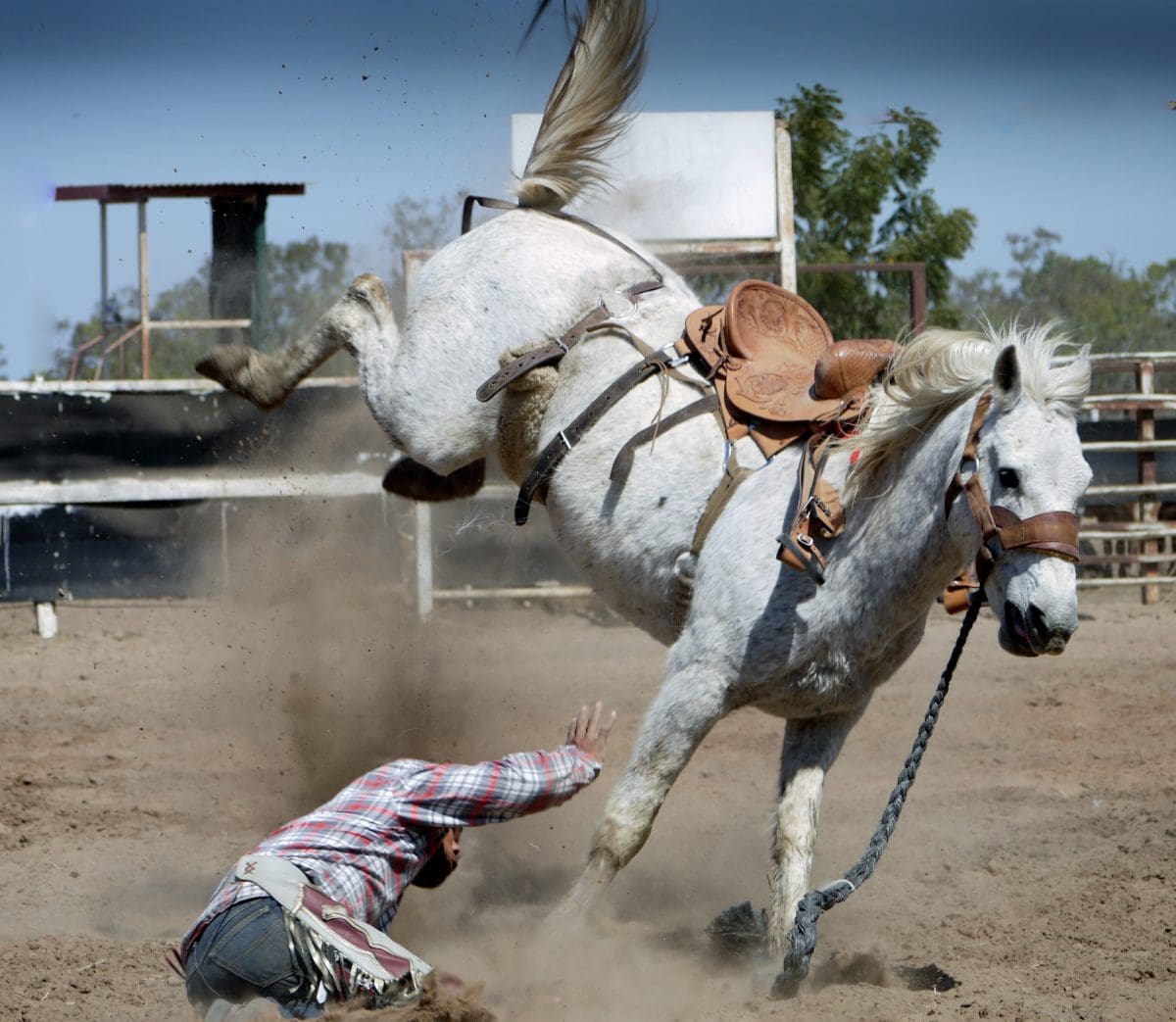Article originally published in the Daily Hive.
What would you do if you saw someone yanking an animal’s ear, twisting their tail, shaking them by the head until they’re thrashing about in stress? Would you turn away? Speak up in protest of the cruel treatment? Call in a report?
Or would you open your wallet?
Most British Columbians would say the unnecessary, cruel treatment of animals, like the aforementioned practices, which are commonly used to make rodeo animals “perform,” should be stopped immediately. In fact, only one-quarter of British Columbians agree with the use of animals in rodeo. Most would never hand over money to see this cruelty in person.
The catch? If you pay taxes in British Columbia, you’re paying for it anyway.
The BC Ministry of Tourism, Arts, Culture, and Sport announced in February that it would provide $30 million in provincial funding to support BC-based events, including rodeos.
More than 2,000 British Columbians emailed Tourism Minister Lana Popham asking that this public funding not be used to subsidize an inhumane private industry. Their calls for justice were ignored – to the tune of nearly $800,000 given to events that include rodeos.
Meanwhile, the provincial government provides no funding for animal cruelty law enforcement. This means that no proactive monitoring is being done at BC rodeos to prevent the improper handling of animals.
The fast-paced nature of the events and aversive tools used to provoke fleeing and bucking behaviours in rodeo animals are contrary to the quiet handling techniques outlined in current standards for these same species on farms.
Now, with BC in the last stretch of its dreaded annual rodeo season, many organizers are opening the gates to animal suffering with taxpayer dollars in their pockets. Significantly, an incident earlier this year suggests that organizers are well aware of the welfare issues inherent in the sport.
Over the May long weekend, the Falkland Stampede held a number of bucking, roping, and wrestling events, which notoriously subject animals to fear, stress, and discomfort. Later, rodeo manager Melissa Seaman requested that an image of a calf being roped tightly around the neck be removed from Facebook, stating that “it doesn’t cast rodeo in the best light.”
Though organizers wished to censor publicly available images of a practice integral to their calf roping event, the Falkland Stampede was happy to accept $24,900 in public funding. The move should raise eyebrows: why is the Province giving funds to an entertainment event that only seems acceptable from carefully selected angles?
The Chilliwack Rodeo, which received $7,500 in funding and will be held August 11 to 13, previously came under fire for its apparent use of electric prods at a 2018 event. It was again the subject of media scrutiny when the Vancouver Humane Society released disturbing footage from last year’s event of animals being roughly handled and deliberately agitated.
In one video clip, a bull falls on his horn and is seemingly injured. In another clip, a calf runs into the arena fence while fleeing from a rider who is chasing them on horseback. Research has found that calves showed signs of distress across all the phases of calf roping, from being chased, lassoed, and caught to when they were released.
The Chilliwack Fair, which hosts the rodeo, received an additional $31,500.
The marketing of these events as “family-friendly” has drawn criticism for the behaviours they teach children. Many children are naturally drawn to animals, and studies show that children who are empowered to form positive emotional bonds with animals develop greater compassion. Conversely, a strong correlation exists between cruelty to animals and violence toward humans.
Rather than nurturing children’s empathy toward animals, rodeos teach children that animals are here for our entertainment. They demonstrate that animals should be treated with force rather than building trust.
But it’s not just the moral lesson that should give pause; several of the rodeos that received funding feature dangerous events specific to children and minors, such as mutton busting (children riding sheep), barrel racing, steer riding, and breakaway roping of calves.
Events that feature children’s rodeo activities include Valley West Stampede in Langley (which received $33,700), Lakes District Fall Fair, Children’s & Music Festival ($12,300), and the 74th Annual North Thompson Fall Fair and Rodeo ($26,200).
Rodeo events are inherently risky to both humans and animals and can end in devastating consequences. A University of Calgary study found it to be one of the most dangerous sports in the world, with a catastrophic injury rate about 20 times higher than football. Tragically, children and adolescents have lost their lives in rodeo events as recently as this year.
From a government that recommends children avoid “high-risk” activities for their safety, the dissonance is astounding.
The public funding of these dangerous, inhumane, and outdated events shows a concerning lack of judgement on the part of provincial decision-makers, who could instead direct this funding to events like music festivals, fairs, and arts and cultural events that bring communities together and that don’t put animals in high-stress, high-risk situations.
By boycotting rodeos and writing an email to the Ministry of Tourism, British Columbians can send a clear message that animals, families, and taxpayers deserve better.

